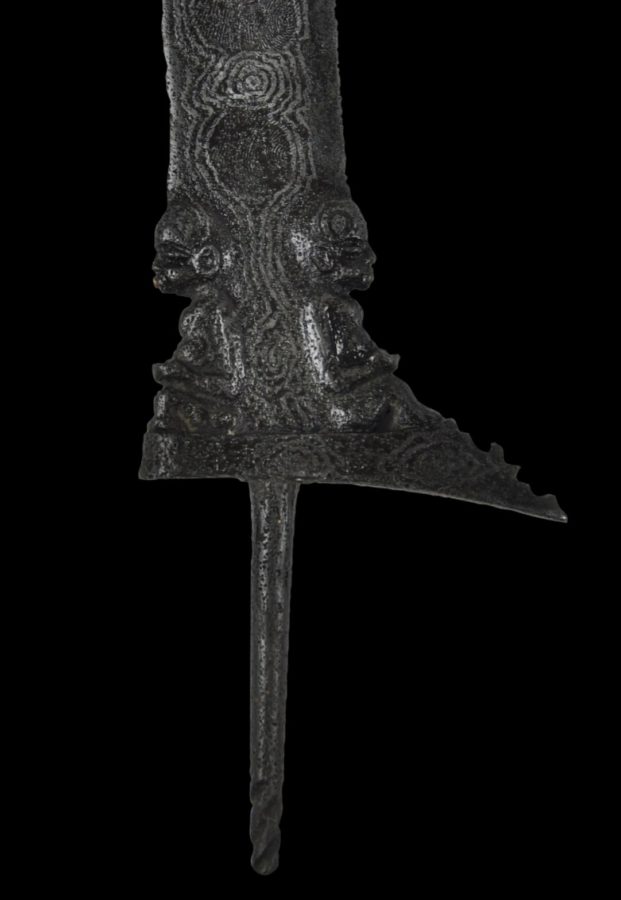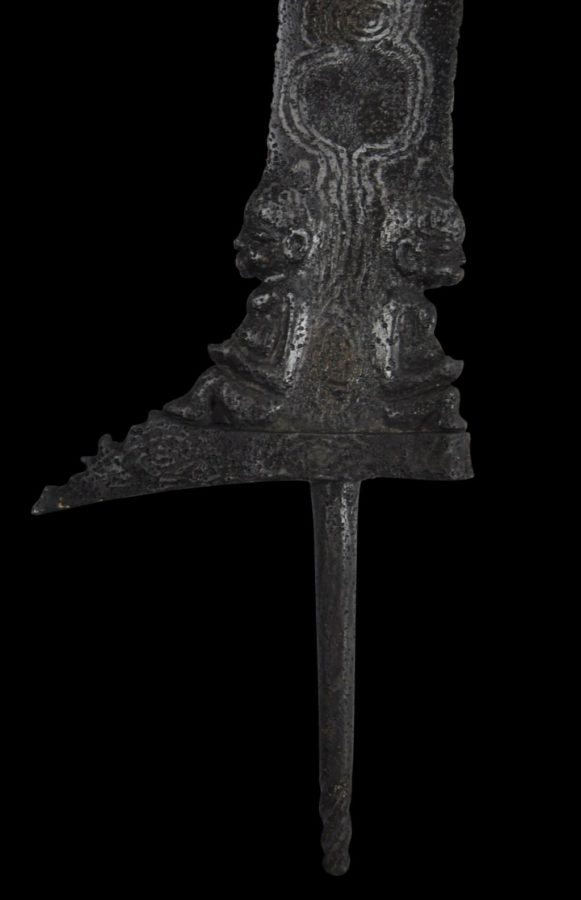This is a very rare, early blade. It is straight, of wrought iron and forged as a single piece with a series of the maker’s thumb prints (pichit) on both sides of the blade. The thumb prints are such that even the patterns of the prints are visible in the metal. Quite how this was done without the maker being severely burned is not known, which has given rise to various theories and legends often associated with magic.
Such blades are rare and are thought to have been the prerogative of royalty. This example is particularly rare because of the small, well chiselled humanoid or fetus-like figures known as a putut figures that decorate each side of the base of the blade.
Such blades were forged in Java during the Majapahit era, and were deemed to be particularly magical. An example of a putut blade is illustrated in Hardi (2010, p. 142). Krises are imbued with special powers in Indonesia and rarer examples are especially magical. Traditionally, it was believed that the possessor of a putut kris would find that his debts were forgiven, for example.
Majapahit krises traditionally were prized among the Malays on the Malay Peninsula because of their perceived talismanic properties. Sheppard (1972, p. 132) says that Malay shamans would have them as one of their rituals objects but that they were never intended to serve as a weapon. He says that a subgroup among these blades was referred to as a kris pichit – blades with finger of thumbprints running along them. According to Sheppard, ‘the finger impressions seem to have been made during the process of forging, for the damask pattern in the iron continues through the depressions. No one knows how these impressions were made, and the blades are so rare that some people believed that they must have been the work of smiths who were possessed of supernatural skill.’
A similar example (but without the putut figures) is illustrated in Sejr Jensen (2008). The author says that such blades are said to have been made by the female empu (kris blade maker) Sombro who lived in the tenth century in Pajajaran, Java, and who is said to have been magically skilled. According to Sejr Jensen she made the pichit depressions on the red-hot blade with her thumb but then hardened the blade by passing it through the labia of her vagina(!)
The blade is in fine condition. There are no rust stains. There is some light scratching to one side of the blade, however.
References
Hales, R., Islamic and Oriental Arms and Armour: A Lifetime’s Passion, Robert Hale CI Ltd, 2013.
Hardi, H. et al, Keris untuk Dunia / Keris for the World 2010, Paguyuban Pelestari ari Tosan aji Nusantara, 2010.
Sejr Jensen, K., ‘The kris and its symbols’ in Arts of Asia, May-June 2008.
Sheppard, M., Taman Indera: Malay Decorative Arts and Pastimes, Oxford University Press, 1972.
Wilkinson, R.J., ‘Papers on Malay customs and beliefs’ [first published in 1906 & 1908], reprinted in Journal of the Malayan Branch of the Royal Asiatic Society, Vol. XXX, Part 4, November 1957.






